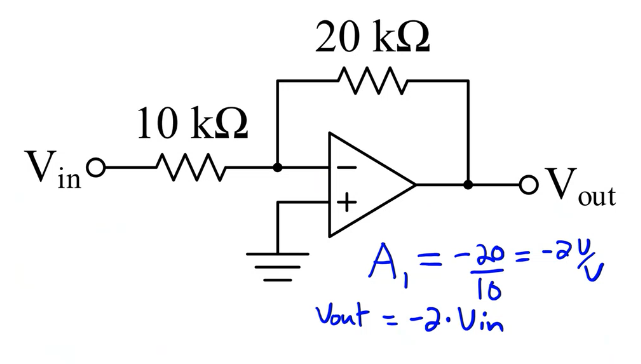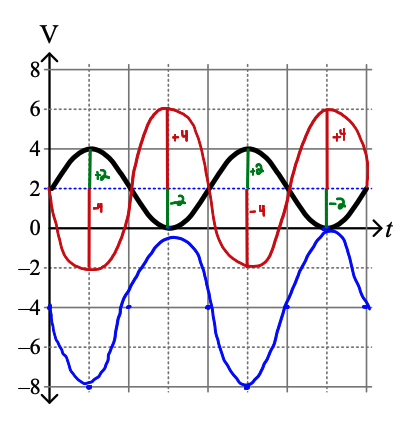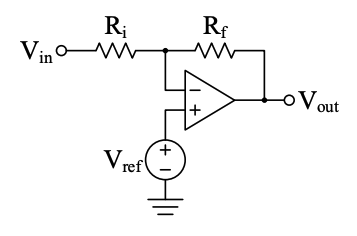Formulation
Signals are not always ground referenced – a signal reference voltage lets us have signals that aren’t always sitting at 0 volts.

From the op-amp above, we have:
So, if the black line below is the original signal, the blue line is the output.

But this isn’t ideal, as we want to multiply the original signal by 2 in terms of amplitude (4 volts peak-to-peak), but centered around the same horizontal ().
We can change this in our op-amp by changing the signal reference voltage. So, since we want the signal to be centered around 2V, we replace the ground connected to the positive terminal of the op-amp with a 2V reference voltage instead, called .

So now our if we have , it means that there is no signal present (equilibrium).
Mathematically:
- Input signal:
- Gain is still
- Output:
And our graph looks like this (which is correct!):

Varieties
Signal reference voltage is a pretty general concept that can be applied to a lot of the op-amps we’ve seen.
Inverting

Non-inverting

Difference Amplifier

For the difference amplifier, the signal reference voltage has no effect on the input because we only care about the difference between the signals. The new input would just be:
However, still causes an offset. So, we have:
Fun application: We can make a level-shifter circuit using a difference amplifier + , such that:
All we need to do is just set to zero and .